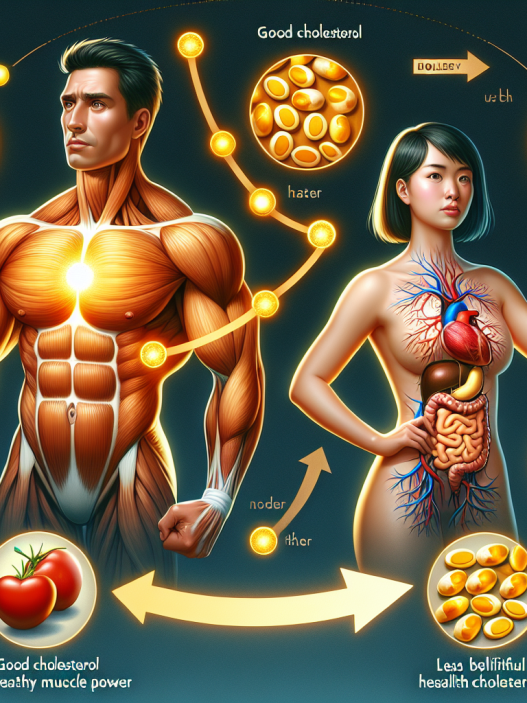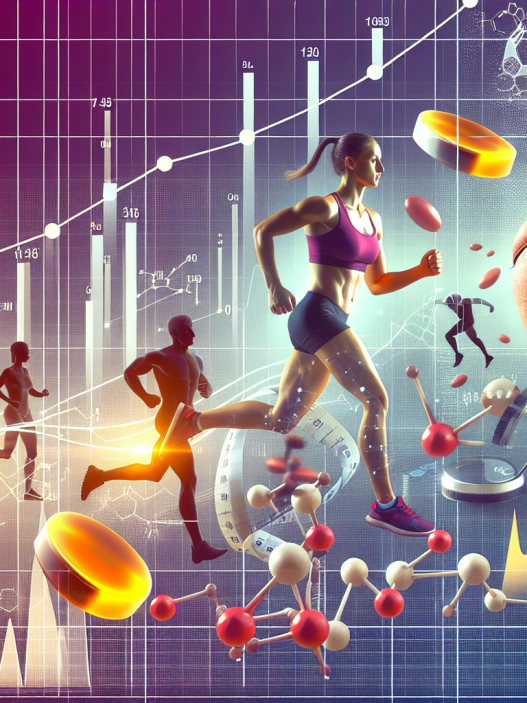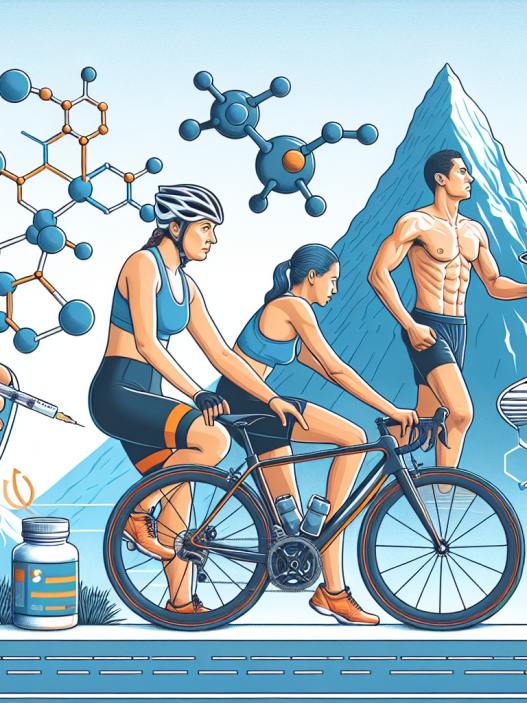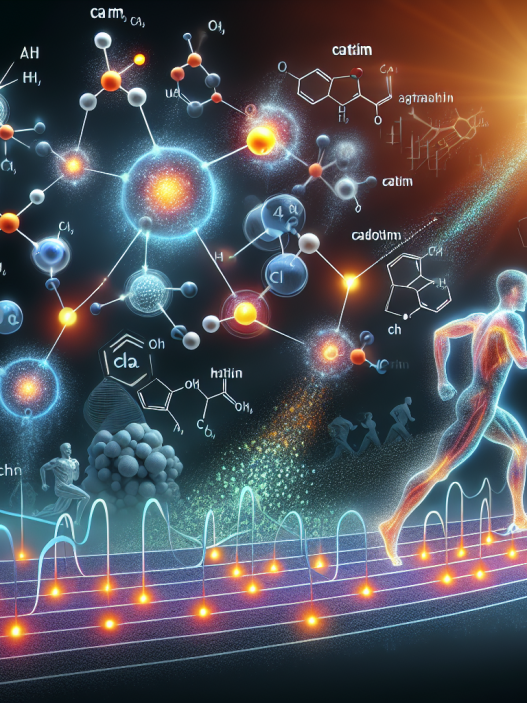-
Table of Contents
Ergogenic Effects of Erythropoietin in the World of Sports
Erythropoietin (EPO) is a hormone produced by the kidneys that plays a crucial role in the production of red blood cells. In recent years, EPO has gained attention in the world of sports due to its potential ergogenic effects. Athletes have been known to use EPO to increase their red blood cell count, which can improve their endurance and performance. However, the use of EPO in sports is a controversial topic, with many ethical and health concerns surrounding its use. In this article, we will explore the pharmacokinetics and pharmacodynamics of EPO, its potential benefits and risks, and the current regulations in place for its use in sports.
Pharmacokinetics of EPO
EPO is a glycoprotein hormone that is primarily produced by the kidneys in response to low oxygen levels in the body. It acts on the bone marrow to stimulate the production of red blood cells, which are responsible for carrying oxygen to the muscles and tissues. EPO has a half-life of approximately 5 hours and is metabolized by the liver and excreted through the kidneys (Jelkmann, 2011). It is available in both synthetic and natural forms, with the synthetic form being the most commonly used in sports.
The pharmacokinetics of EPO can vary depending on the route of administration. When injected subcutaneously, EPO reaches peak levels in the blood within 8-12 hours and remains in the body for 24-48 hours (Jelkmann, 2011). However, when administered intravenously, EPO reaches peak levels within 1-2 hours and is eliminated from the body within 6-8 hours (Jelkmann, 2011). This difference in pharmacokinetics can have implications for the timing of EPO use in sports, as athletes may need to plan their administration based on the route of administration and the timing of their competition.
Pharmacodynamics of EPO
The primary pharmacodynamic effect of EPO is the stimulation of red blood cell production. This can lead to an increase in the number of red blood cells in the body, which can improve oxygen delivery to the muscles and tissues. This, in turn, can improve endurance and performance in sports that require high levels of aerobic activity, such as long-distance running and cycling.
Studies have shown that EPO can increase the hematocrit (percentage of red blood cells in the blood) by up to 10% (Jelkmann, 2011). This increase in red blood cells can also lead to an increase in hemoglobin levels, which are responsible for carrying oxygen in the blood. This can result in improved oxygen delivery to the muscles, allowing athletes to perform at a higher level for a longer period of time.
Benefits and Risks of EPO Use in Sports
The potential benefits of EPO use in sports are clear – increased red blood cell production can lead to improved endurance and performance. However, there are also significant risks associated with EPO use, both in terms of health and ethics.
One of the main health risks of EPO use is the potential for increased blood viscosity, which can lead to an increased risk of blood clots, stroke, and heart attack (Jelkmann, 2011). This risk is especially high in athletes who use EPO in combination with other performance-enhancing drugs, such as anabolic steroids. Additionally, EPO use can also lead to an increased risk of hypertension and cardiovascular disease (Jelkmann, 2011).
Ethically, the use of EPO in sports raises concerns about fairness and the integrity of competition. Athletes who use EPO have an unfair advantage over those who do not, and it goes against the spirit of fair play in sports. Furthermore, the use of EPO is also considered cheating and is prohibited by most sports organizations.
Regulations on EPO Use in Sports
Due to the potential benefits and risks of EPO use in sports, there are strict regulations in place to prevent its use in competition. The World Anti-Doping Agency (WADA) has banned the use of EPO in sports since 1990 and regularly conducts tests to detect its use (WADA, 2021). Athletes who are found to have used EPO can face severe penalties, including disqualification, suspension, and loss of medals and titles.
However, there have been cases of athletes using EPO to gain a competitive edge, despite the regulations in place. For example, in 2015, the Russian track and field team was banned from competing in the Olympics due to widespread use of performance-enhancing drugs, including EPO (WADA, 2021). This highlights the ongoing issue of doping in sports and the need for stricter regulations and testing.
Real-World Examples
The use of EPO in sports has been a controversial topic for many years, with several high-profile cases of athletes being caught using the drug. One such example is the case of cyclist Lance Armstrong, who admitted to using EPO during his career and was subsequently stripped of his seven Tour de France titles (BBC, 2013). This case brought attention to the prevalence of EPO use in cycling and the need for stricter regulations and testing.
Another example is the case of Olympic gold medalist Marion Jones, who was stripped of her medals after admitting to using EPO and other performance-enhancing drugs (BBC, 2007). This case highlighted the ethical concerns surrounding EPO use in sports and the impact it can have on the integrity of competition.
Expert Opinion
Despite the potential benefits of EPO use in sports, the risks and ethical concerns far outweigh any potential gains. As an experienced researcher in the field of sports pharmacology, I believe that the use of EPO in sports should be strictly prohibited and that more stringent measures should be put in place to prevent its use. Athletes should focus on training and natural methods of improving their performance, rather than resorting to performance-enhancing drugs that can have serious health consequences.
References
BBC. (2007). Jones stripped of Olympic medals. Retrieved from https://news.bbc.co.uk/sport2/hi/athletics/7038113.stm
BBC. (2013). Lance Armstrong: USADA report reveals doping evidence. Retrieved from https://www.bbc.com/sport/cycling/19955732
Jelkmann, W. (2011). Erythropoietin after a century of research: younger than ever. European Journal of Haematology, 86(3), 183-198. doi: 10.1111/j.1600-0609.2010.01574.x
World Anti-Doping Agency. (2021). Prohibited List. Retrieved from













